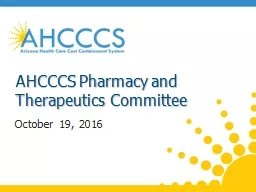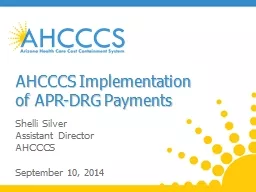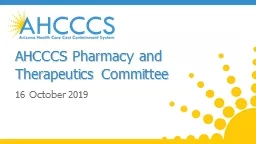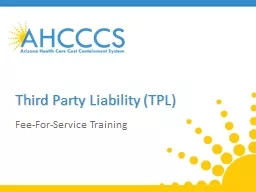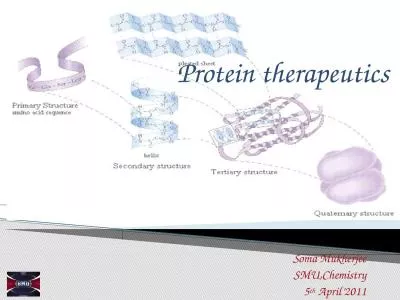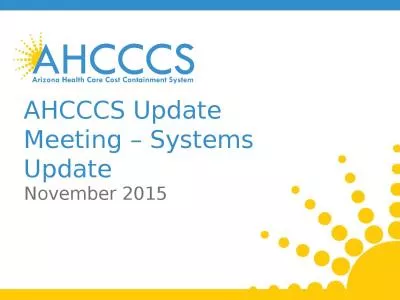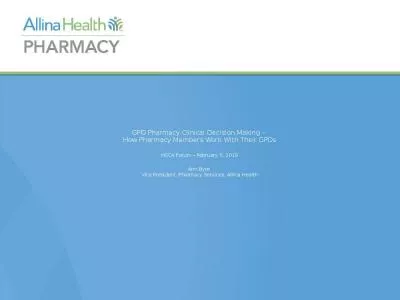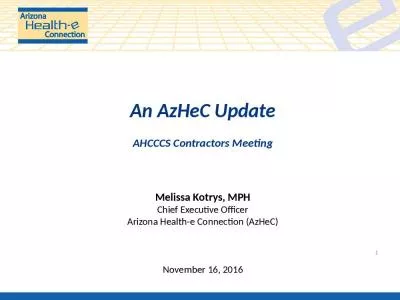PPT-AHCCCS Pharmacy and Therapeutics Committee
Author : liane-varnes | Published Date : 2018-09-20
October 19 2016 August 16 2016 Meeting Minutes Review and Vote 2 Reaching across Arizona to provide comprehensive quality health care for those in need Magellan
Presentation Embed Code
Download Presentation
Download Presentation The PPT/PDF document "AHCCCS Pharmacy and Therapeutics Commi..." is the property of its rightful owner. Permission is granted to download and print the materials on this website for personal, non-commercial use only, and to display it on your personal computer provided you do not modify the materials and that you retain all copyright notices contained in the materials. By downloading content from our website, you accept the terms of this agreement.
AHCCCS Pharmacy and Therapeutics Committee: Transcript
Download Rules Of Document
"AHCCCS Pharmacy and Therapeutics Committee"The content belongs to its owner. You may download and print it for personal use, without modification, and keep all copyright notices. By downloading, you agree to these terms.
Related Documents

